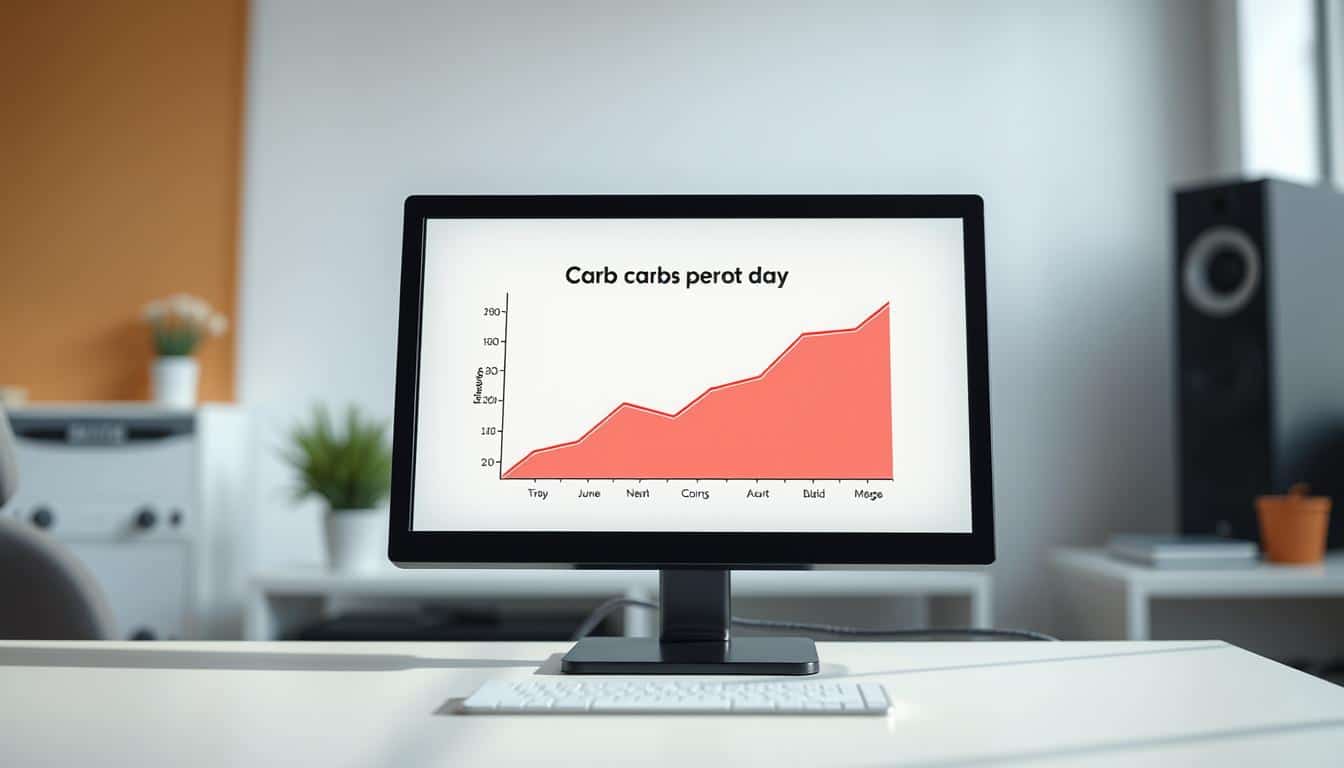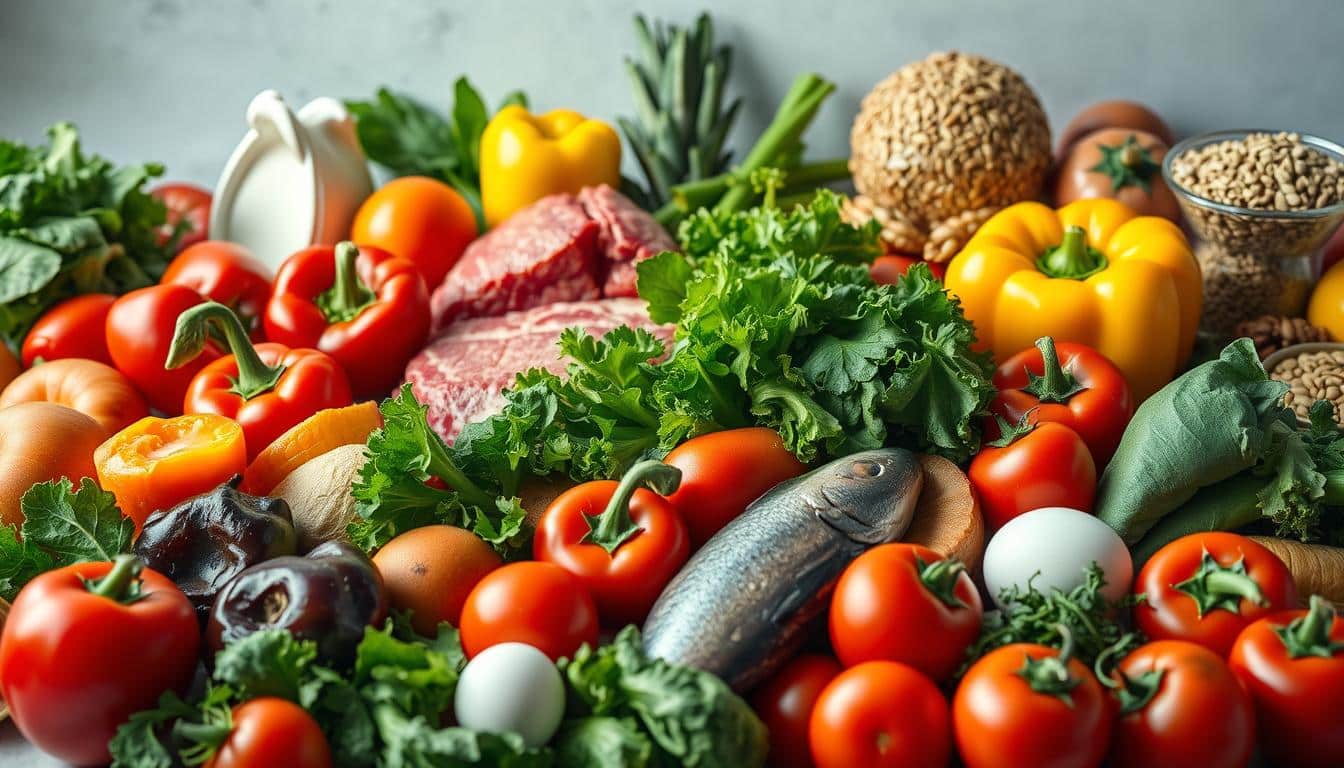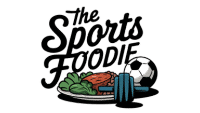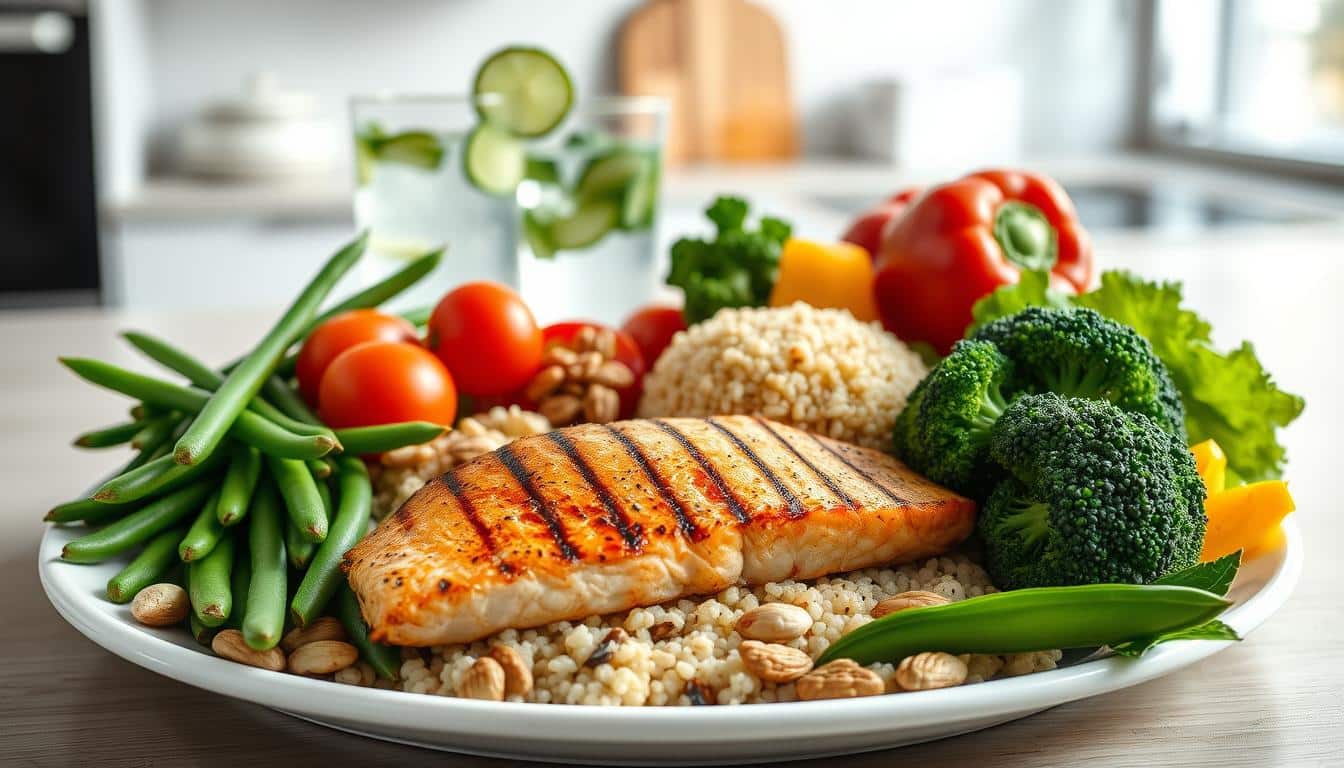Surprising fact: a typical low carb diet gives under 26% of daily calories from carbs, which is less than 130g on a 2,000-calorie day.
I wrote this practical guide so you can use a plan that fits your training and goals. I’ll show what a diet looks like, why some athletes try it, and when it helps or hurts performance.
We focus on protein, fats, and vegetables while trimming bread, pasta, and sweets. You’ll see how carbs link to pace, power, and recovery across a training week.
I explain macros, timing, sample days, and eating out tips. You also get notes on blood markers and health that often improve with lower carbs.
Read on to set clear goals, match fuel to the work you do, and follow a plan that respects training and recovery. I keep it simple so you can act fast.
What a low carb diet means for athletes today
Short definition: this diet limits foods high in starch and added sugar and shifts your plate toward protein, vegetables, and healthy fats.
On a 2,000-calorie day a typical approach allows under 130g of carbohydrates per day. Keto is a stricter type: think 20–50g of carbs per day and more fat as fuel.

People choose these diets to support weight loss and better blood sugar control. Research shows benefits for general health markers, though effects on high-intensity performance vary.
- Focus: reduce carbohydrates per day and raise protein and vegetables.
- Use carbs as fuel: keep higher intake on hard sessions and lower it on easy days to build fat use.
- Keto is one type with very low carb intake; it can hurt top-end power in some sports.
- Pick foods low in sugar and starch, track calories, and watch blood sugar if that’s a goal.
Benefits and risks for performance, weight, and blood sugar
How you eat shapes energy, body composition, and glucose control during training. This section sets what works and what to watch.
Energy availability and glycogen
Carbohydrates are premium fuel for hard efforts. Glycogen is stored sugar in muscle and liver. It powers pace and short bursts.
During long sessions, 60–90g of carbs per hour can help endurance. Very low intake may cut power and training quality.

Lower carbohydrate approaches can aid weight loss and curb appetite. That may improve body composition when calories match goals.
Track weight trends and training logs so loss doesn’t come at the cost of performance.
Blood sugar stability and health markers
Many people see steadier blood sugar and better blood markers on reduced carbs. Research shows this in people with Type 2 diabetes and those with excess weight.
Yet keto diet phases can cause fatigue, nausea, and a risk of underfueling. Monitor recovery, mood, and blood tests.
| Area | Potential benefits | Potential risks | Practical tip |
|---|---|---|---|
| Training quality | Stable energy on easy days | Lower high-intensity power | Save carbs for hard sessions |
| Body weight | Weight loss and appetite control | Excessive loss, RED-S risk | Track weight and training together |
| Blood markers | Better glucose and some lipids | Possible nutrient gaps on strict phases | Test blood and adjust diet |
| Sustainability | Improved satiety | Hard to maintain strict keto diet | Use flexible types and cycles |
Set your carbs per day and macros based on training
Choose carb targets that match your workout load and recovery needs. Pick a daily carbohydrate range that fits how hard you train and what you want to achieve.
Daily carb intake ranges
On a 2,000-calorie day, a common guideline is under 130g of carbohydrates per day for reduced-carbohydrate types.
If you accept a stricter approach, keto limits carbs to about 20–50g per day, with fat covering most calories.
Protein and fats targets
Aim for protein at roughly 0.6–0.9g per pound of body weight to support repair and recovery.
Fill remaining calories with fats such as olive oil, avocado, nuts, and fatty fish to keep energy steady.
- Raise carbs on hard sessions to protect power and cut heavy fatigue.
- Lower carbs on easy or rest days to improve fat use without hurting recovery.
- Match macros to your goals and review every two weeks.
- Track intake, carbs, and calories with a food log so you can adjust with confidence.
- Start conservative and move carbs up or down based on session quality and sleep.
| Type | Carbs per day | Protein | Fats |
|---|---|---|---|
| Moderate reduced | <130g | 0.6–0.9g/lb | Remaining calories |
| Keto | 20–50g | 20–25% of calories | 70–80% of calories |
| Training-driven | Raise on hard days | Maintain 0.6–0.9g/lb | Adjust to hit calories |
Tip: Keep hydration and sodium in mind. Lower carbohydrate intake can reduce water and minerals, so replace fluids and salt as needed.
Fuel strategy by workout type
Different workouts demand different fuel—so pick carbs and protein that suit the session. Use higher carbohydrates when you need pace and power. Save lower intake days to build fat use and support recovery.
High-intensity days: hit pace and power
On the hardest sessions aim near 2g carbohydrates per pound of body weight that day. That helps training quality and limits early fatigue.
Endurance and easy days: build fat use
For long steady work or easy days use about 50–150g carbs. Push more fat and protein to keep energy stable and protect muscle.
Carb cycling: match carbs to the work
- Hardest days: ~2g carbs per pound per day.
- Moderate days: 100–150g carbs.
- Easy/rest days: 50–100g carbs.
Pre-, intra-, and post-workout timing
Pre: eat a simple carb plus protein 1–3 hours before hard efforts.
Intra: for long sessions target 60–90g carbs per hour via gels or drink mixes.
Post: consume carbs and protein within 1–2 hours to refill glycogen and start repair.
| Session | Daily carb range | Key tip |
|---|---|---|
| High-intensity | ~2g/lb | Prioritize carbs early in day |
| Endurance | 50–150g | Use intra carbs if >2 hours |
| Easy/rest | 50–100g | Focus on protein and fat |
Build meals with simple food choices
Pick simple, reliable foods to build plates that support training and recovery. Keep a short list you use often. This saves time and helps you hit targets on busy days.
Proteins, vegetables, and fats as the base
Build plates around protein like chicken, eggs, salmon, or lean beef for recovery and satiety.
Fill half the plate with vegetables such as broccoli, spinach, tomatoes, and asparagus for volume and vitamins.
Add fats—olive oil, avocado, nuts, and seeds—to support energy and flavor.
Whole grains, beans, and starchy vegetables in moderation
Use whole grains like quinoa or oats when you need extra fuel. Keep portions measured on harder training days.
Work in beans and starchy items (potatoes, sweet potatoes) in small amounts to add fiber and minerals without overshooting carbs.
Dairy, cheese, and nuts for convenient calories
Choose dairy such as Greek yogurt and cheese for easy protein and convenient calories.
Keep cheese portions reasonable and pair them with vegetables. Nuts and seeds are handy snacks to protect weight and hunger.
- Skip candy, baked goods, refined grains, and sugary drinks.
- Use a short food list to speed shopping and prep.
| Category | Best choices | Use in moderation |
|---|---|---|
| Protein | Chicken, fish, eggs, lean beef | Processed meats |
| Vegetables & Fats | Broccoli, spinach, olive oil, avocado | Starchy veg like peas, corn |
| Grains & Dairy | Quinoa, oats, Greek yogurt, cheese | Milk, full-fat yogurt, large portions |
low carb meal plan for athletes: sample days and portions
Use these three sample days to see how grams per meal add up to daily carbohydrates and calories. Each day lists simple portions and a total carbs per day so you can match intake to training.
Three-day sample menu with carbs per meal and per day
- Day 1 — total ~62g carbs: Breakfast — Ezekiel bread (1 slice) + avocado (10g) ≈ 15g; Lunch — grilled chicken + zucchini noodles ≈ 12g; Snack — Greek yogurt (small) with almonds ≈ 10g; Dinner — bunless burger with broccoli ≈ 25g.
- Day 2 — total ~40.6g carbs: Breakfast — Greek yogurt (plain, 150g) + blueberries (30g) + almonds ≈ 12g; Lunch — rib eye + rutabaga & green beans ≈ 10g; Dinner — baked salmon with asparagus and cauliflower rice ≈ 18.6g.
- Day 3 — total ~54.7g carbs: Breakfast — eggs, tomato, avocado ≈ 6g; Lunch — shrimp garden salad ≈ 8.7g; Snack — small fruit or nuts ≈ 6g; Dinner — chicken with Brussels sprouts and quinoa (½ cup) ≈ 34g.
Keto sample day for very low carbohydrate phases
Keto pattern: fat 70–80%, protein 20–25%, carbs 5–10% (about 20–50g carbohydrates per day).
Example day: eggs with cheese and bacon; large salmon salad with avocado; jerky and nuts; ribeye with broccoli and cauliflower in butter; chia pudding made with coconut milk. Aim to keep carbs between 20–50g and watch training quality; shift back if hard sessions suffer.
| Type | Example items | Daily carbs |
|---|---|---|
| Balanced low | Ezekiel toast, yogurt, quinoa dinner | 40–70g |
| Very low (keto) | Eggs, fatty fish, ribeye, nuts | 20–50g |
| Higher-fuel day | Rice or extra quinoa at dinner | Raise by 30–60g |
Quick tips: Note portions and calories to keep energy high. Use rice or quinoa on harder days and skip them on easy days. Track blood and energy to refine portions across the training block.
Breakfast, lunch, dinner, and snack templates
Use easy templates to build consistent meals that fit training days. These are quick to swap and simple to scale when you need more or less fuel. I keep each plate centered on protein and vegetables, then layer carbs by session intensity.
Breakfast ideas with eggs, Greek yogurt, and berries
Breakfast template: eggs + sautéed vegetables + a bit of cheese. Add berries on higher-carb days.
Swap: Greek yogurt with almonds and a few blueberries for a fast protein start.
Lunch and dinner bowls with chicken, fish, and vegetables
Lunch bowl: grilled chicken or salmon over mixed greens, olive oil, and seeds.
Dinner bowl: beef or tofu with broccoli, mushrooms, and a small portion of quinoa on hard sessions.
Healthy snacks for training and work
- Hard-boiled eggs or string cheese with baby carrots.
- Greek yogurt, a handful of nuts, or leftover protein and vegetables.
- Pre-workout: banana or rice cake plus a protein source on high-intensity days.
- Post-workout: lean protein, vegetables, and a modest carb if you trained hard.
Quick rules: Build each plate around protein and vegetables. Layer carbs and dairy like Greek yogurt to match the day. Season simply with herbs, salt, and olive oil to keep prep fast.
| Meal | Core | Easy swap |
|---|---|---|
| Breakfast | Eggs, vegetables, cheese | Greek yogurt, almonds, berries |
| Lunch | Chicken or fish + mixed vegetables | Salad + seeds + olive oil |
| Dinner | Beef or tofu + broccoli, mushrooms | Small quinoa portion on hard days |
| Snack | Hard-boiled egg, nuts, cheese | Leftovers or fruit with protein |
Smart shopping and meal prep
Spend an hour on Sunday and you’ll eat better all week with less effort. A small routine makes grocery trips faster and keeps food ready when training gets busy.
Grocery list and weekend prep steps
Start with sections: proteins, vegetables, fats, dairy, grains, and beans. This keeps the cart focused and speeds checkout.
- Buy bulk proteins (meat, fish, eggs) and portion them for quick use.
- Cook a pot of brown rice or quinoa and roast sweet potatoes for higher-carb training days.
- Wash and chop non-starchy vegetables so bowls come together in minutes.
- Stock portable snacks: nuts, jerky, and Greek yogurt for on-the-go eating.
- Batch sauces with olive oil, lemon, and herbs to add flavor without extra carbs.
- Label containers with carb servings to control carb per meal and protect weight goals.
- Keep one frozen backup meal for nights when time is tight.
- Set a weekly diet plan that links meals to your training schedule and goals.
| Section | What to buy | Weekend prep |
|---|---|---|
| Proteins | Chicken, salmon, eggs | Grill or bake in portions |
| Grains & starchy veg | Brown rice, oats, sweet potatoes | Cook rice; roast sweet potatoes |
| Vegetables & fats | Leafy greens, broccoli, olive oil, avocado oil | Wash, chop, store airtight |
| Dairy & snacks | Greek yogurt, cheese, nuts, seeds | Portion into snack packs |
Quick tip: If you want new breakfast ideas, check these high-energy breakfast ideas to match eating to training days.
Eating out while keeping carbs in check
A smart order at a restaurant can protect your energy and blood sugar without being boring. Keep choices simple. Aim for protein and veggies first. Use small tricks to cut sugar and extra calories.
How to order mains, sides, and sauces
Pick a protein main like steak, chicken, or salmon. Ask them to skip breading and sweet glazes. Request sauces and dressings on the side. That way you control added sugar and calories.
Swap grains and rice for extra vegetables or a side salad. Order whole grains such as brown rice only on hard training days and keep portions small. Add avocado or a drizzle of olive oil if the plate looks light.
Drink choices and portion strategies
Choose water, black coffee, or unsweet tea. Skip soda and fruit juice to protect blood sugar. If portions are large, box half before you eat. Splitting a dish lowers carbs and calories at the table.
- Pick unbreaded protein and avoid sweet sauces.
- Trade rice or grains for extra greens or a salad.
- Ask for sauces on the side to limit hidden sugar.
- Drink water or unsweetened beverages to protect blood sugar.
- Order brown rice only when you need the extra fuel and keep it small.
- Make a quick plan before you arrive to order fast and stress-free.
- Split or box large portions to control carbs and total calories.
| Choice | Why it helps | Quick tip |
|---|---|---|
| Protein main (steak, chicken, salmon) | Provides satiety and repair | Skip breading and sweet glazes |
| Extra vegetables / salad | Lower carbs, add fiber | Ask for olive oil on the side |
| Drink water or unsweet tea | Protects blood sugar | Avoid soda and juice |
Conclusion
Use these closing tips to match your fuel to hard sessions and protect recovery.
This guide shows that reduced carbohydrate approaches vary. Some diets and short keto periods can aid weight loss and blood sugar control, but they may reduce top-end power.
Set clear goals, track carb intake, and test changes every two weeks. Base most plates on protein, vegetables, and healthy fats, and place carbs where they give the most energy.
Start the next week with one small change. Record how sleep, mood, and performance respond. If energy or training falls, raise carbs on your hardest days or get support from a coach or clinician.


